A Renovation to Remember
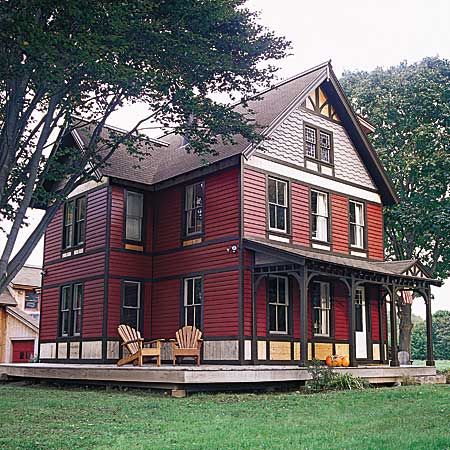
With 1,540 square feet of space on a third of an acre between farmland and the Branford River in Connecticut, the location and solid frame of this home appealed to architectural designer David Strong, who says it just “felt right.” He meant to fix it up, sell it, and forget it. But somewhere between removing the asbestos siding and rebuildng the porch, this woodworker became deeply attached to the 1890 farmhouse he now calls home.
Removing the shingles revealed a remarkably well-preserved Victorian-era farmhouse with cedar shakes in the gables, horizontal banding in the trim, and bead-board paneling. “It was like unwrapping a present,” says Strong, who carefully removed the asbestos while a helper kept the siding wet with a garden hose to avoid dangerous particles from becoming airborne. The original porch was reconstructed and a separate workshop and design studio built out back.
New Uses

To prepare for renovations and additions, ceilings and walls were removed from different parts of the home. During this demolition process, Strong salvaged three different kinds of woods. After removing all the nails, he used some of it to create new cabinets, beadboard paneling, and the kitchen backsplash.
The Kitchen
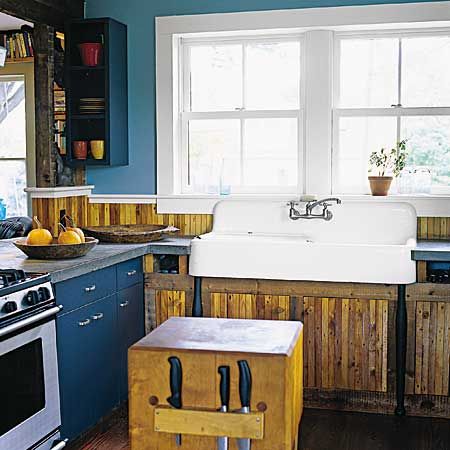
The iron-legged porcelain-coated cast-iron sink, which is original to the house, sits above cabinets made from salvaged boards. Radiant heat is installed beneath the new cypress floor, which is stained mahogany.
Strong chose cypress for the floor because he wanted a distressed look. “I love that it dents more easily than harwood like oak, so it looks a little worn.”
Curved Counters
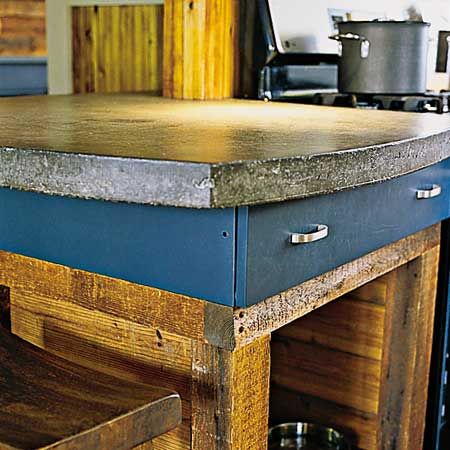
“Another project I always wanted to do and got the chance in my own home was building a concrete kitchen countertop,” says Strong. To create the curved counters, he made forms of plywood, placed them on top of steel cabinets reclaimed from another project, and filled them with a hand-troweled concrete mix. He purposely left trowel lines to reflect the old character of the house.
Interior Details
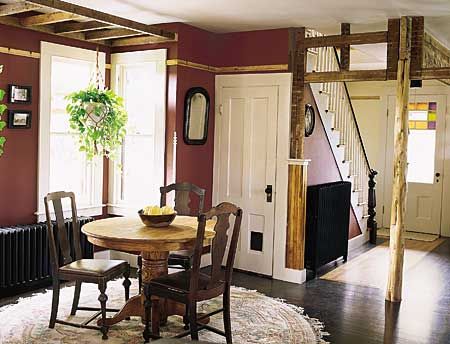
An L-shaped runner of original quarter-sawn red oak was created by coloring the surrounding flooring with ebony stain. The homeowner exposed some of the true 2×4 headers and studs of the entry-hall wall. “Once I took the paster off the walls I realized I didn’t want to close all of them back up,” says Strong. “The exposed stud walls downstairs make the rooms feel larger and allow for better ventilation.”
To complete the look, Stong added a rough-hewn cedar post rescued from another job site.
Warm and Cozy
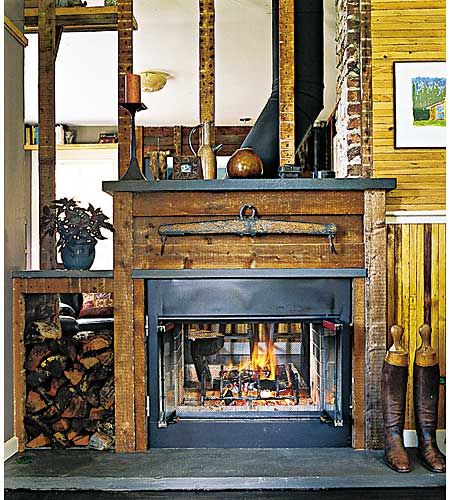
As a Christmas present to himself, Strong built a two-sided fireplace between the living room and the library. He used framing timbers salvaged at the house and slabs of bluestone to form a shelf and hearth. During the cold winter renovation, he slept in front of the blaze to keep warm.
Reading Room
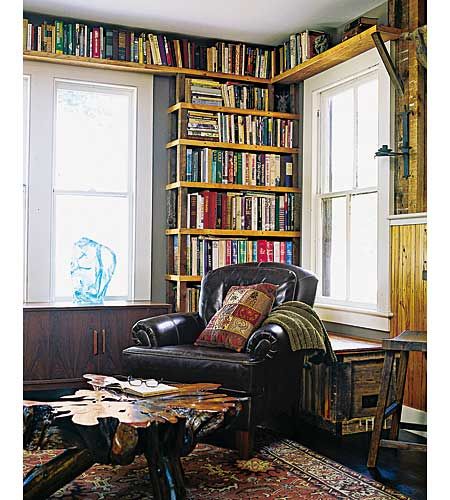
The library’s built-in shelves were constructed from an old entertainment center’s eastern white pine. Strong made the table for his wife, Mary, out of a tree stump found in a lake.
Modern Amenities
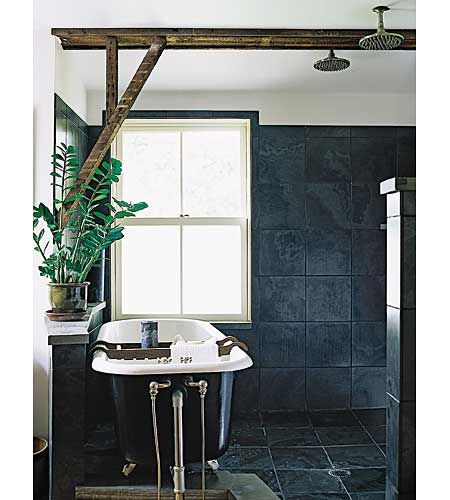
The original tub was restored and the shower was tiled with 12-by-12-inch squares of honed black slate. Bluestone caps the half-wall partition to the shower, which is fitted with two showerheads and three body sprays.
The Addition
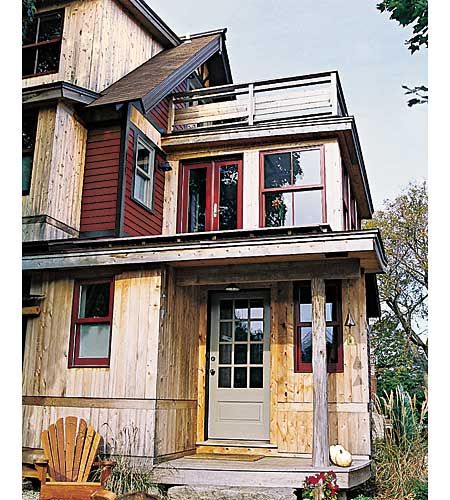
The new addition is clad in 1×6 tongue-and-groove clear Atlantic white cedar that will mellow to a silver-gray over time. Inside, it shelters a sleeping porch upstairs (with a deck on top) and an entry hall and half-bath downstairs. Strong made sure that the additions were proportionate to the original house and respectful of its architectural character, but to distinguish the new, he didn’t stain the siding.
The Layout
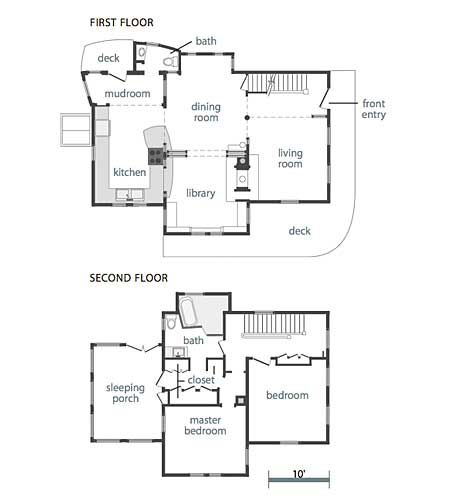
A new entry and half-bath were built off the kitchen. The roofs of the kitchen and dining room came off to allow for second-floor additions.
Adding on to a not-so-level old house was challenging for Strong, who drilled a hole in the attic floor and sent a tape measure down to the existing finished floor, then worked on proper measurements from that number.
Plans for a third floor are currently in the works.
Before
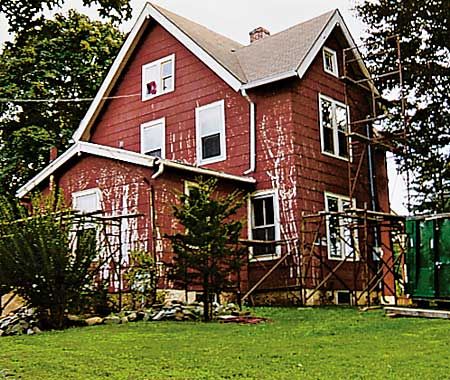
Once wraught with asbestos, crumbling plaster, and overgrown flora, seven years later this home is a mix of old and new, resulting in unique style and character.
